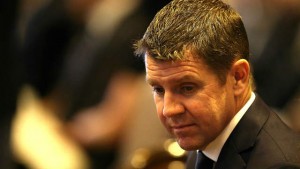Home » Commentary » Opinion » Bambi’s budget bottom line still dogged by worries
· The Spectator - Flat White

 The Baird government recently announced a $4.7 billion budget surplus for 2015-16, more than a billion dollars above the estimate made in the 2016-17 budget just four months ago. It also revealed the state ended the year with no general government net debt. On the face of it, this kind of budget outcome is one any federal treasurer (or any other state treasurer, for that matter) would die for.
The Baird government recently announced a $4.7 billion budget surplus for 2015-16, more than a billion dollars above the estimate made in the 2016-17 budget just four months ago. It also revealed the state ended the year with no general government net debt. On the face of it, this kind of budget outcome is one any federal treasurer (or any other state treasurer, for that matter) would die for.
Baird and his ministers deserve credit for fiscal discipline, but not as much as the raw numbers suggest. The $4.7 billion surplus is an operating result, which takes no account (other than through depreciation expense) of the state government’s large capital outlays on roads, hospitals, schools and the like. Once these are deducted, the so-called net lending/borrowing result is a surplus of $0.4 billion — still a surplus, but nothing like $4.7 billion. Even this result, as the government pointed out, was flattered by the fortuitous timing of some transactions.
But the biggest elephant in the room — which renders a net lending surplus of any size more than likely transitory — is the inflation of stamp duty revenue by the state’s (and particularly Sydney’s) real estate boom. In the space of just a few years, stamp duty revenue from property transactions has more than doubled to around $9 billion. All experience suggests there will be a big reversal at some point in the future when the real estate boom ends and goes into reverse. The volatile history of this revenue source suggests it could decline by 20 percent or more in a single year, alone sending the net lending result if not the operating result back into deficit.
The key issue is whether the government has done enough to strengthen the fundamentals of NSW finances to withstand the inevitable setbacks. It has eliminated net debt, but only because the proceeds of privatisations have gone into the state’s bank account pending a big ramp-up in infrastructure spending in the years ahead.
In the 2016-17 budget, the operating surplus was projected to shrink and net lending to go heavily into deficit after 2015-16. Accordingly, June 2016 was expected to be the low point for net debt before it went back up to $24 billion in June 2020. At 3.7 per cent, this would be the highest proportion of gross state product in 20 years. Whether this is manageable depends on the money being spent wisely on productivity-enhancing infrastructure.
Another key test of fiscal sustainability is the management of operating expenses. When the O’Farrell government took the reins in 2011, these expenses had been galloping ahead at more than six percent a year and it was this trend more than anything else that had driven the budget deep into deficit and cast a shadow over the triple-A credit rating. Since 2011 this growth rate has been brought down to a more sustainable trend of six percent. Provided this trend is maintained, the operating budget should be able to absorb normal cyclical weakness in revenue over the next few years. The credit rating agencies appear to think so, having taken NSW off the downgrade warning list.
Looking further ahead, however, the budget will come under increasing pressure from escalating expenditure on public hospitals. On this, Baird, his eventual successor and all the other state premiers will have to do better than go cap-in-hand to the Commonwealth for more health dollars. Commonwealth health policies will need to change, and the states themselves will need to improve efficiency and effectiveness in hospital expenditure.
Robert Carling is a Senior Fellow at the Centre for Independent Studies
Bambi’s budget bottom line still dogged by worries